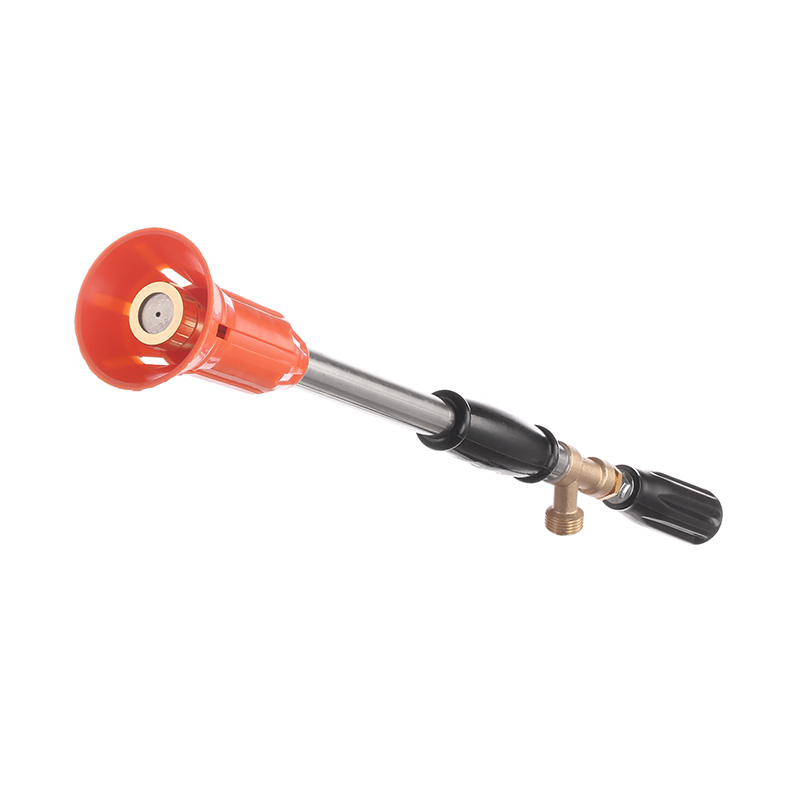In agricultural production, choosing the right spr...
See DetailsIn modern agriculture, consistent application of nutrients, pesticides, and water is essential for crop health and yield.Straight agricultural spray guns and agricultural high-pressure nozzles have become indispensable tools for producers who need precise coverage for different types of crops and field conditions. Understanding the mechanical characteristics, installation considerations, and daily operation tips of these components can help with the effectiveness and uniformity of spraying tasks.

Design features that support uniform spraying
Direct spray agricultural spray guns have a simple and practical layout. The direct spray gun body design allows the operator to focus the spray into a line, which is particularly important when targeting specific rows, plant bases, or hard-to-reach areas. This approach can reduce overspray, avoid chemical waste or accidental drift onto non-target crops.
Gun bodies are typically made of corrosion-resistant metals or engineered composites. These materials can prevent damage caused by repeated contact with agricultural chemicals, fertilizers, and high-pressure water. Seals and internal passages are also carefully designed to prevent wear and tear caused by long-term use.
Spray guns are used in conjunction with agricultural high-pressure nozzles to provide a controlled spray pattern. Nozzles are available in a variety of aperture sizes and configurations, including fan, cone or straight stream. Selecting the right gun and nozzle combination ensures that the spray density and distribution meet the specific requirements of each treatment.
Selecting Nozzles For Different Crop Needs
One of the key decisions in configuring a spraying setup involves choosing the correct nozzle type. For instance, a narrow-angle nozzle may be necessary for spot treatments or orchard work where dense foliage requires deep penetration. Wide-angle fan nozzles are often used for field crops where broader coverage is essential to reach surfaces.
Pressure ratings also play a role. Higher pressure nozzles produce finer droplets that improve surface contact but can be more susceptible to drift in windy conditions. Lower pressure options may generate larger droplets, helping materials adhere to leaves or soil. Reviewing label instructions for the chemicals being applied will guide the appropriate droplet size and pressure range.
Operators should also consider nozzle material. Brass and stainless steel options typically offer longer service life, while polymer nozzles may be cost-effective for applications where chemical compatibility is less demanding. Regular inspection for wear or clogging extends the useful life of each nozzle and maintains consistent coverage.
Installation Practices That Enhance Performance
Proper installation of straight spray guns and high pressure nozzles contributes directly to reliable performance. Before assembly, clean all fittings to remove debris that could obstruct flow or damage seals. Applying thread sealant or appropriate washers helps prevent leaks at connection points.
When securing the spray gun to hoses or boom assemblies, operators should ensure fasteners are tightened to manufacturer specifications. Over-tightening can crack fittings, while loose connections may cause reduced pressure or sudden disconnections during use.
For portable sprayers or hand-held applications, checking the weight balance of the assembled spray gun and nozzle combination is helpful. A well-balanced setup reduces operator fatigue, particularly during extended spraying sessions.
Operational considerations to ensure consistent results
Maintaining smooth movement and consistent trigger pressure during operation ensures even coverage. Inconsistent walking speeds or sudden changes in pressure can result in uneven spraying or uneven treatment.
It is helpful to perform a calibration before each spraying. This involves measuring the output over a set period of time and confirming that the flow rate matches the expected spray volume. A simple calibration operation can prevent under- or over-spraying, which can affect crop health and compliance.
Operators should be aware of environmental conditions, including wind speed and temperature, which can affect droplet evaporation or drift. Spraying in the early morning or evening when the weather is calm and the temperature is suitable is usually a good choice.
Maintenance procedures to protect equipment investment
Direct spray agricultural spray guns and high-pressure nozzles require frequent cleaning and inspection. Flushing the system with clean water after each use can remove residual chemicals that may harden or corrode internal components.
Nozzles should be disassembled and soaked periodically to dissolve scale buildup. A soft brush or special nozzle cleaning tool is recommended to avoid damaging or enlarging the nozzle aperture. Checking seals and gaskets can help detect wear early, reducing the risk of leaks or inconsistent spray patterns.
Storing equipment in a dry, wind-proof environment protects it from exposure to UV rays and high temperatures, which can cause material degradation over time. For seasonal operations, disassembling and lubricating moving parts before storage can help keep things running smoothly when you resume spraying.
Supporting operational goals with the right equipment
For agricultural businesses focused on consistent and efficient spraying, choosing durable direct spray guns and compatible high-pressure nozzles is a practical step toward reliable field operations. The adaptability of these tools allows growers to meet the needs of a variety of crops without frequent reconfiguration.
Whether applying fertilizer, pesticides or water, a well-maintained spray system increases productivity and protects the environment.